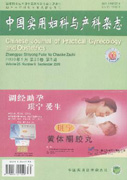Abstract: Objective To identify the risk factors of postpartum hemorrahge(PPH) and establish evaluation system and prediction equation for the risk of morbidity. Methods A case-control(1∶2) observational study was conducted.Totally 212 parturients with PPH, who presented to Fujian Maternity and Child Health Hospital for regular prenatal care and parturition from December 2008 to December 2009, were selected as the study group.The control group consisted of 424 health parturients at the same period.Univariate analysis was used for risk factors screening.Then,based on “predict-scale of postpartum hemorrahge” set by national PPH prevention cooperation,establish perfect “risk evaluation system of PPH”.Compare effectiveness between them by receiver-operating characteristics.Resaults Incidence of PPH was 3.07%, and 15.56% of them were severe PPH.The risk factors of PPH included age, parity,induced abortion,BMI in early pregnancy, uterine height,multiple pregnancy, PLT,placental previa,hypertensive disorders complicating pregnancy , hysteromyoma, fetal abdominal circumference, hydramnios, delivery way,uterine laceration of caesarean section,genital tract trauma, abnormal first stage,prolonged third stage, placental adherence or accrete and born weight.The risks of PPH increased significantly ,when total score ≥6 or antepartum score≥4.AUC of predict-scale used in this study was 0.657,and AUC of risk evaluation system was 0.805.Prediction equation for the risk of PPH was Z=1-1/[1+exp(-3.216+0.482×antepartum score +0.452×intrapartum and postpartum score)],or Z=1-1/[1+exp(-3.187+0.469×total score)].Conclusions The happening of PPH has a close association with the fundamental factors of pregnant woman, fetus, complications, labor and so on.Women with total score ≥6 or antepartum score≥4 required close monitoring.The risk evaluation system is more efficient than the predict-scale for detecting PPH.

